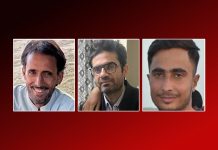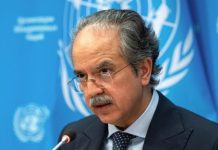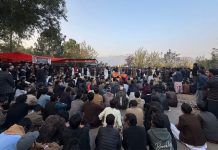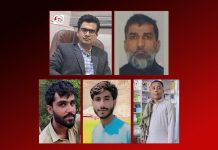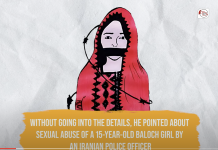Baloch missing persons’ issue is often downplayed by Pakistani authorities and the media channels. Some sections of the Pakistani society usually hold a comparatively sensible view of the issue but the armed forces have the most interesting theories regarding the missing persons. Former Inspector General (IG), Frontier Corps(FC), Major General Nadir Zaib in 2012 briefed a parliamentary committee for National security on Missing Persons where he said that there are no missing persons in Balochistan, they all are in Afghanistan [Joined militancy].
Whereas the IG FC before Mr Zaib, Major General Obaid Ullah Niazi had told The Guardian that there are no Missing Persons, they are actually people abducted by militants in FC uniform. One can only come to a conclusion that there are no missing persons but only militants abducting ‘themselves’ into militancy?
Besides the conspiracy theories and the denial of apprehension of Baloch activists by armed forces, the civilian representatives of the government have admitted on multiple occasions that Missing Persons are in armed forces’ custody.
Back in 2009, Pakistan Peoples’ Party announced its flagship reconciliatory package for Balochistan where PM Yousuf Raza Gilani had promised publicly that missing persons would be released before the Eid. According to an 8 December 2005 statement, by the then Pakistani interior minister Aftab Sherpao, an estimated 4,000 people from Balochistan were in the custody of the authorities having been detained in Balochistan between 2002–2005.
No missing persons were released on the governmental level but the statements proved that the abducted Baloch activists and students were not in mountains, neither in Afghanistan nor in any fairyland but in the custody of Pakistani authorities.
In 2012, during a hearing of three Baloch Missing Persons’ case at Supreme Court, the then DIG Police [Balochistan] Hamid Shakeel produced CCTV footages in front of the court where FC personnel could be seen abducting the three men. Only a few years later, the same Hamid Shakeel was killed in a suicide attack in 2017 when he was serving as AIG Police in Balochistan.
Asian Human rights Commission has produced a list of 14,000 missing persons in Balochistan, whereas, Voice of Baloch Missing Persons claims to have a detailed list of more than 40 thousand Balochs abducted since decades in Balochistan. Proven facts cannot be swept under the carpet and all fingers from Amnesty International to Human Rights Watch point at Pakistan’s intelligence agencies as the main culprit behind enforced disappearances.
Baloch insurgents have levelled up their attacks since 2018, especially the “self-sacrificial” attacks which are unprecedented in the decades-long insurgency in Balochistan. However, with the increased intensity of the attacks against Pakistan’s interests, the level of the crackdown against students and activists has also exacerbated, increasing the number of Missing Persons. This time again, the names of stock exchange attackers were propagated as Missing Persons, which is based on complete misinformation.
In the past four major attacks: Chinese Engineers in Dalbandin, PC hotel at Gwadar, the Chinese consulate in Karachi and the latest PSX a total of 11 attackers were involved and all of them had been identified but none of them had ever been on a list of Missing Persons.
The name of Hammal Fateh among attackers on PC hotel at Gwadar was shown by Pakistani media to be among the Missing Persons but BNP Chief Akhtar Mengal and Mama Qadeer of VBMP had come with proof that the person who remains missing is Hammal Marri from Kohlu district and the attacker hailed from Kech district.
Similarly, PSX attacker Salman Hammal was being called a Missing Person too but his sister denied this in an interview with Independent Urdu, she said that her brother had left the house 8 years ago to join insurgents and they were aware of it [the family never joined the camp of VBMP, same as the families of other attackers].
Given the confusion spread deliberately by state authorities, the risk to the lives of real missing persons has increased to many folds. The media should act responsibly and instead of publishing what is fed to them through suspicious sources, journalists should confirm the details independently.














